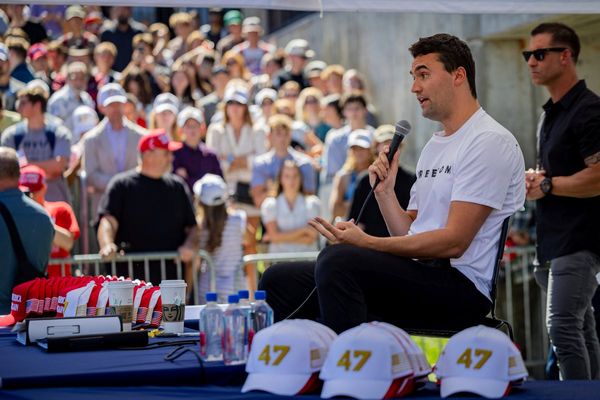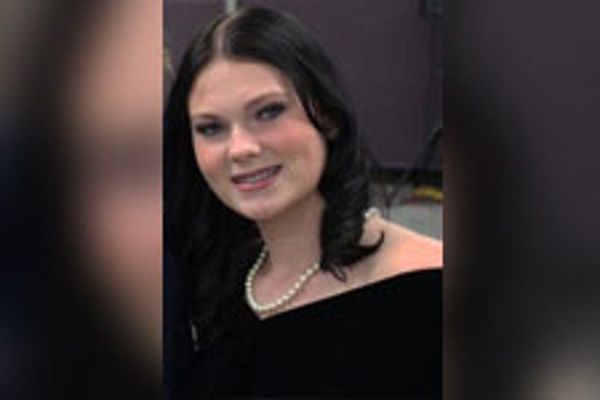
Muffled drums, the catafalque, plumed helmets and a new familiarity with the earl marshal; these are the characteristics shared by the great state funerals of the last century and a quarter of British history. But past press coverage of “national bereavement”, as the Observer referred to the death of Queen Victoria in 1901, reveals another common factor.
A state funeral, a rare event, has to be explained to every generation. Its pomp and arcane lore is always mysterious. So news reports read like a sombre catechism; a list of conventions designed to give identity to a nation.
In 1910, on the death of Victoria’s son, Edward VII, an Observer writer made this point when he praised Westminster Hall and Saint George’s chapel in Windsor by quoting the Scottish historian Thomas Carlyle, who had, he thought, “never said a truer word than ‘the Bible of every nation is its own history’ and in these two buildings … are two of the most glorious pages of that Bible – not imprinted on perishable paper, but carved in noble stone.”
Monday’s funeral will trace a template set at the end of Victoria’s reign. Elizabeth II, like her forebears, will go to the Windsor chapel described at the death of her grandfather in 1936 by our special correspondent as “that perfect specimen of Perpendicular architecture”.
A state funeral is intended for monarchs alone, but exceptionally “a highly distinguished figure” can be buried this way. The last Briton to receive this honour was Winston Churchill in 1965, in recognition of his second world war leadership. A plan rehearsed under the code name Operation Hope Not, reflected the Queen’s wish for the nation to “have the opportunity to express their sorrow”.
His funeral varied from George VI’s in that the coffin went from Westminster Hall to St Paul’s Cathedral and then on by river to Waterloo, for a final railway journey to Oxfordshire.

The Observer reported that once Big Ben had sounded for the former prime minister at 9.45am, when the procession started, it stayed silent. At the funerals of Edward VII, George V and George VI, Big Ben rang out from 10am with a stroke for each year of the monarch’s life.
Despite cold weather, 321,360 people lined up to view Churchill’s coffin and 164 casualties were treated among the queuers, as a “cold grey sky produced a deathly backdrop to the morning’s ritual” before “the cumbersome gun carriage that had carried Queen Victoria’s coffin carried his, dragged by naval ratings”.
State funerals require the gun carriage bearing the coffin to be pulled by Royal Navy sailors using ropes, rather than horses. And they are also overseen by the earl marshal (Edward Fitzalan-Howard, 18th Duke of Norfolk) a Great Officer of State, while mere “ceremonial funerals” are organised by the lord chamberlain, an officer of the royal household. In 1965, the Observer explained the role of the 17th Duke of Norfolk, then Bernard Marmaduke Fitzalan-Howard, as “chief planner” of Churchill’s rites: “This small, shy man with his little puffed eyes has been earl marshal and the highest authority on royal and state ceremonial since he succeeded to the dukedom at the age of nine. He was only 27 when he arranged the funeral of George V and the coronation of George VI.”
Key national figures such as Diana, Princess of Wales, the Queen Mother, Margaret Thatcher and, a year ago, the Duke of Edinburgh have all had ceremonial funerals, which also usually have a lying in state, a procession with a gun carriage and a military presence.
Queen Victoria’s funeral involved bringing her body over from her home on the Isle of Wight. The Observer recorded the death as “the dread calamity which last week we hoped might be averted” and ran a poem by Reginald Hughes:
“The Queen is dead! Our Queen, the Queen of Queens;/And England sits as in a dream, and sobs,/And rich and poor, and high and low are made/Peers by grief’s patent of nobility.”
In the spring of 1910 at the funeral of Edward VII, the new King George V walked “in the dead king’s wake” as his father’s chief mourner. The royal body had been held in the throne room at Buckingham Palace on request of Queen Alexandra, “who in her great grief desired it should remain as long as possible in the room in which death took place”. There was, the Observer predicted, to be even more “human majesty” and “direct foreign representatives of kings” than at the funeral of his mother, Victoria.
George V commanded the earl marshal “to express the hope that at the hour of the burial memorial services will be held in all great centres throughout the country”, partly because, although Monday is a bank holiday, this is not a fixed precedent. George VI’s funeral was also a normal working day. State funerals were, this paper noted, not scarce at this point: “In an age when crowns have shed themselves as leaves in autumn, England feels in the passing of her Sovereign a pang through all her being.”
Although there was no official day of mourning in 1952; the Observer reported that “there will be a general suspension of work and business in London and in many cities and towns throughout the country”. “In the West End all the big stores will be closed and their example will be followed by many of the small establishments in all parts of the capital. Two minutes silence will be observed throughout Great Britain and northern Ireland beginning at 1.30. The silence will also be observed throughout the empire.”

The service at Windsor would be simple, we reported, regardless of “the scene of medieval panoply and pageantry”; “the one hymn will be King George’s favourite, Abide With Me.” Music is now an important element of royal funerals: the choices for Monday’s ceremony will be announced on Sunday.
On the death of Churchill, the BBC Third Programme played “a piece specially composed for the occasion and broadcast, a March of Homage in Honour of a Great Man by Sir Arthur Bliss, master of the queen’s music”.
In February 1952, Observer writer Patrick O’Donovan described the funeral of the late Queen’s father at St George’s chapel: “There were the heralds pacing up the aisle, old gentlemen in shining coats that are no more than hoardings for the display of the Royal Arms, men that bear titles of impossible romance.” The crown on the coffin “glittered icily” he added, but the grenadier bearers “stumbled on the steps”.
Also writing for the Observer was former prime minister Lord Attlee, who reportedly arrived at the funeral “haltingly on a stick”. In his famous piece “The King I Knew,” he remarked George VI had been “fortunate in not being born to succeed to the throne”. The newspaper’s leader said: “It is as if the collective soul has been touched at a depth to which politics, economics and diplomacy never reach.”
Clothing is always important: there were rules about when to wear crepe when mourning Victoria. Before her son’s funeral in 1910 an advert for the Dickins & Jones store promoted two mourning outfits “for immediate wear”; a dainty wrap, the Pauline, and the more graceful Hanover. In 1936 Queen Mary, George V’s widow, and Queen Maud of Norway, his sister, were heavily veiled inside a state landau, while public mourners wore a black armband.

The queue to see George V included “City workers in bowler hats and dark blue coats, women, rich and poor, football fans, wearing the colours of their teams.” By 1965 fur was in vogue for those paying respects to Churchill. “The Queen Mother emerged first, in a plain cloth coat and black fur stole.” The Duchess of Kent “like most of the women in the cathedral” wore a fur hat, while “Princess Alexandra wore a magnificent black fur”. Elizabeth II, in contrast, “wore a simple, half-belted cloth coat and a plain black beret”.
The news pages have often concentrated on the queues, with public mourners at George V’s funeral reportedly thronging to Westminster Hall for his second day of lying in state. “The crowds of mourners were greater, and the number who filed past the flowered-crowned coffin exceeded 128,000 up to 10 o’clock last night, making a total for the two days of 238,000. At that hour 20,000 people were still in the queue.”
It was a foggy January but “the pilgrimage to Westminster Hall continued throughout yesterday and by midnight when the doors were closed, 150,777 people had filed past the catafalque”. The early morning queue, “stretching for over a quarter of a mile”, was “joined by several charwomen who decided to visit Westminster hall before returning home”.
At Windsor in 1952, “eight to ten thousand people were turned away disappointed waiting to see the wreaths sent for the king’s funeral”. A frustrated police constable commented: “It has just been mass stupidity. It we had let in everyone who queued they would have been going in hours after it was pitch dark.”
There were no coloured wrist straps. Historically, seats on the procession route were sold and in 1910 the cost seemed high: “It was fully expected that the prices would be higher than on the occasion of the funeral of the late Queen Victoria, in so much as the course of the cortege will be shorter,” but a first floor window was going for £50. In 1936, seat prices varied “from two to ten guineas”, with five guineas described as “a fair price for a good view”.
Down the decades, the rules for state funerals have proved flexible. As the Observer noted before the funeral of Queen Victoria: “No amount of ransacking of old records would be likely to disclose a completely satisfactory series of precedents for the great ceremonials to be carried out at the end of the week in performing the last sad rites and observances deemed fitting for the obsequies of the greatest monarch of modern, or perhaps of all, time.”







